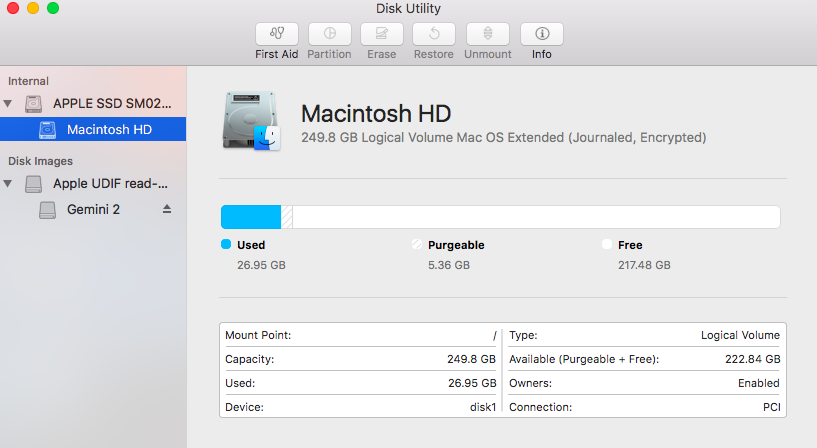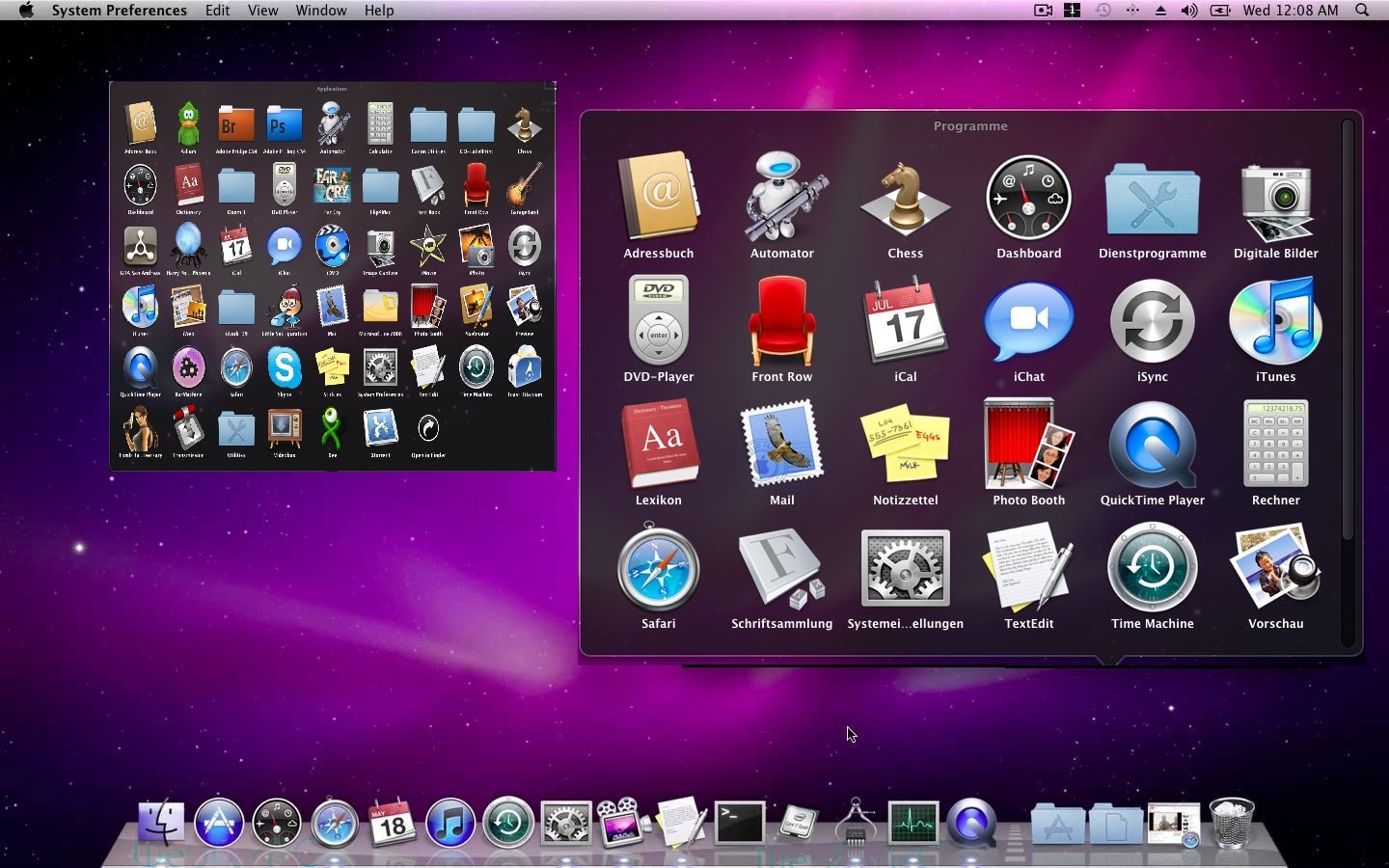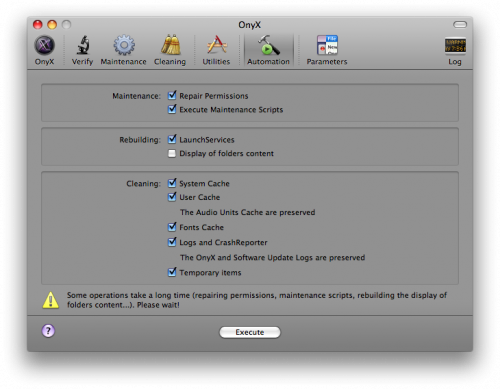Summary :
- Free Disk Repair Software Mac Os X 10 11 Download Free
- Free Disk Repair Software Mac Os X 10 0
- Best Mac Disk Repair Software
- Best Free Disk Repair
- Free Disk Repair Software Mac Os X El Capitan
Unfortunately, it seems that developers of Lazesoft Mac Data Recovery will never update this file recovery software to officially support the latest version of Mac OS X because the last update was released in 2014. Advantages: Designed specifically for Mac users. Features an easy-to-use interface. Runs on older versions of Mac OS X. Nov 23, 2020 And it is compatible with Mac OS X 10.7 and above. When 'Disk Utility can't repair this disk error' appears if you forget to make a backup of your external hard drive or other data drives and format it, get Stellar Data Recovery Premium Trial on your Mac. Open Disk Utility. In general, you can just open Disk Utility from the Utilities folder of your Applications folder. However, if your Mac doesn't start up all the way, or you want to repair the disk your Mac starts up from, open Disk Utility from macOS Recovery: Apple silicon: Turn on your Mac and continue to press and hold the power button.
Are there some disk problems on your Mac? Want to use Disk Utility to fix them but receive an error message 'Disk Utility can't repair this disk'? This post will walk you through how to quick and effectively fix this issue.
Quick Navigation :
Help! Disk Utility Failed to Repair This Disk
I just made a brief tutorial on how to repair disk permissions in Mac OS X. This works for probably any version since 10.3, however, since I have only used 1. DiskWarrior is a handy and useful Mac OS X application that promises to help your recover files and restore your computer to its working state. User-friendly interface. Thanks to DiskWarrior you can safely recover files such as photos, music or videos from your corrupted hard disk and rebuild the.
'My external drive is a Samsung M2 Portable 3 Media, 500GB. I might have accidentally disconnected the hard drive without ejecting it first. Now when I run disk utility and click Repair Disk it says: 'Disk utility can't repair this disk. Back up as many of your files as possible, reformat the disk, and restore your backed-up files.' forums.macrumors
Disk Utility, developed by Apple, is a comprehensive system utility for performing disk and disk volume-related tasks on the Mac operating systems. These tasks include formatting, partitioning, erasing, cloning disks, repairing a damaged disk, etc. When certain disk problems happen, to repair this disk using Disk Utility will be a good choice.
However, sometimes you may receive the error message 'Disk Utility stopped repairing 'Macintosh HD'/disk1s2/External HDD, etc. Disk Utility can't repair this disk'.
Usually, this problem may not only happen on Macintosh HD but also on an external hard drive in Mac Mavericks, Yosemite, EI Capitan, or Sierra.
Actually, the above message won't show up in normal circumstances of disk errors. But if the hard drive is beyond the repair scope of Disk Utility, for example, file system gets corrupted, the issue appears.
Well then, what should you do to fix Macintosh HD, external hard drive or another disk that Disk Utility can't repair? Here are some solutions for you.
Fix Disk Utility Can't Repair This Disk
If Disk Utility can't repair external hard drive or Macintosh HD, you should do as the error message shows: back up as many of your files as possible before fixing the issue for data protection.
Back up Important Files with Time Machine on Mac
Before solving the drive that Disk Utility can't repair, the most important thing is to make a backup of the disk data. Usually, the tool called Time Machine will be a good option.
It is the built-in feature of the Mac and can back up your files with ease to an external storage device so as to restore them in the event of unexpected accidents.
Then, here comes the question: how to make a time machine backup from Disk Utility?
Step 1: Connect an external storage drive to your Mac.

Step 2: Then an alert may appear on your Mac asking if you want to configure it as the backup disk with Time Machine. Just click Use as Backup Disk. Besides, it is recommended to check Encrypt Backup Disk.
Step 3: If you don't receive this alert, please go to System Preferences > Time Machine.

Step 4: Click Select Backup Disk to select the storage device which you wish to back up to, and click Use Disk.
This post from apple website - How to use Time Machine to back up your Mac shows you more information.
Solution 1: Fix the Hard Drive in Single User Mode
What if Disk Utility stopped repairing Macintosh HD? As is well known, Macintosh HD can be viewed on the Mac desktop and it is similar to the 'My Computer' icon in Windows. Moreover, this drive contains the Mac operating system. To fix the issue, you should use FSCK tool. This is the built-in diagnostic & repair program and it can verify & repair the current startup disk.
Step 1: Restart your Mac, and then press and hold the Command + S keys during the startup to enter Single User Mode which will provide you with a text-mode terminal.
Step 2: Type the command /sbin/fsck -fy.
By default, the target disk in Single User mode is read-only, thus, you need to change that: type /sbin/mount -uw /.
- If everything is fine, the message 'The volume Macintosh HD appears to be OK' will appear.
- If some problems are found, you will see 'File system was modified'. Just run the fsck -fy command again until you see a “The volume Macintosh HD appears to be OK” message.
Step 4: Type reboot to exit Single User Mode.
If FSCK cannot help you to fix Disk Utility stopped repairing Macintosh HD, another thing you can do is to reinstall the Mac operating system. How to reinstall macOS will be helpful.
Solution 2: Reformat Drive When Disk Utility Can't Repair External Drive
If Disk Utility failed to repair your external hard drive or other data disk, the above solution is not suitable. In this case, you can do nothing but to reformat the disk. How can you format the target hard drive?
Step 1: Go to Applications > Utilities to find and launch Disk Utility and you can find all the hard drives.
Step 2: Select the target disk or drive, click Erase feature in the top menu. Note that this operation will destroy all the data stored on it.
Step 3: Enter a name, choose a file system and a partition map. Finally, click the Erase button.
After completing the formatting, Disk Utility can't repair this disk issue on an external hard drive can be solved. And there is another thing you should do, that is to restore the deleted data from the backups.
Restore Your Backed-up Files
Step 1: Select Enter Time Machine from the menu bar. If you don't see this option, please go to System Preferences > Time Machine to check Show Time Machine in menu bar.
Step 2: In Time Machine, open the folder containing the files you want to restore.
Step 3: Use the timeline on the edge of the screen or onscreen up and down arrows to quickly find needed items.
Step 4: Select the needed items and click the Restore button to finish the recovery.
Recover Data from Formatted Hard Drive on Mac
When Disk Utility failed to repair disk, you may forget to back up the important files and directly format the target disk. As a result, formatting will make you lose all the data. In this case, the key thing is to recover lost files from the formatted hard drive.
Well then, is there any data recovery software that can help you to get files back? Sure! Just keep reading.
As to data recovery for Mac, Stellar Data Recovery, is worthy of being recommended. It is specialized in recovering deleted data like files, photos, videos, audios, emails, and more from your internal hard drive, external hard drive, SD card, USB flash drives, memory sticks and other storage devices on all the Mac devices.
Besides, it can restore data from formatted, damaged, and lost partition, as well as unmounted and encrypted drives. What's more, it supports APFS, HFS+, FAT, and NTFS file systems. And it is compatible with Mac OS X 10.7 and above.
When 'Disk Utility can't repair this disk error' appears if you forget to make a backup of your external hard drive or other data drives and format it, get Stellar Data Recovery Premium Trial on your Mac.
Please don’t waste time; just get files off failing hard drive on Mac immediately since they may disappear at any time.
Now, let’s see how to use Stellar Data Recovery.
Step 1: After getting this Mac data recovery software, install it on your Mac and then launch it to the main interface where you can decide what to recover. Then, click Next to continue.
Step 2: Select your disk and click Scan to start a scan.
Step 3: Now, this data recovery software starts the scan. Depending on the size and condition of the disk, this may take some time and you should wait patiently.
Step 4: After the scan, the deleted files after fixing 'Disk Utility can't repair disk' error will be found. In the left section, unfold each folder to search for needed files or you can go to Deleted List to look for files.
Step 5: Check the items that need to recover and click Recover. Then, specify a path to save the data.
If you don’t activate Stellar Data Recovery Premium, you will get a prompt to ask you to purchase a license key via MiniTool Store after clicking Save. This is since the trial edition can only scan data but not recover it.
Within simple steps, Stellar Data Recovery for Mac helps you to recover lost files from the formatted drive. If you encounter 'Disk Utility can't repair this disk' error message and format the target drive but forget to back up the crucial files, just get this software to get lost data back.
Bottom Line
Get 'Disk Utility can't repair this disk' error message on Macintosh HD or an external hard drive in Mac Mavericks, Yosemite, EI Capitan, or Sierra?
This post offers you the corresponding solution in two cases - Disk Utility stopped repairing Macintosh HD and Disk Utility can't repair external drive. Just do as the above paragraphs show. Besides, if you lost some important files when fixing the issue, try to recover them with MiniTool Mac Data Recovery.
Should you have any suggestions of Disk Utility failed to repair disk issue or any questions during using our software for Mac hard drive recovery, please don't hesitate to tell us by leaving a comment in the following area or sending an email to [email protected].
Disk Utility Can't Repair This Disk FAQ
Repairing, Restoring, or Reinstalling Mac OS X Software
If you have a problem with your Mac software or hardware, Mac OS X provides repair
and restore utilities that may eliminate problems and can even restore your software
to its original factory settings. You can access these utilities from the Mac OS X Utilities
application, even if your computer isn’t starting up correctly.
Use the Mac OS X Utilities application to:
Â
Repair your computer’s disk using Disk Utility.
Â
Restore your software and data from a Time Machine backup.
43
Chapter 3
Problem, Meet Solution

Â
Reinstall Mac OS X and Apple applications.
Â
Restore your computer to its factory settings by erasing its disk and reinstalling
Mac OS X and your Apple applications.
If your computer detects a problem, it opens the Mac OS X Utilities application
automatically. You can also open it manually by restarting your computer.
To open the Mac OS X Utilities application:
m
Restart your computer while holding down the Command (x) and R keys. The Mac OS X
Utilities pane appears.
Important:
If the Mac OS X Utilities application doesn’t open after restarting, hold
down Command (x)-Option-R and restart the computer to access the Mac OS X
Utilities software from the Internet. Your computer must be connected to a network
that has access to the Internet.
Some utilities in the Mac OS X Utilities application require access to the Internet and
the Mac App Store. You may need to make sure your computer is connected to the
Internet by using your Ethernet or Wi-Fi network.
To connect by using a Wi-Fi network:
Free Disk Repair Software Mac Os X 10 11 Download Free
1
Choose a network from the Wi-Fi status menu in the upper right corner of the screen.
2
If necessary, type the network password.
To join a closed network, choose Join Other Network. Enter the network’s name
and password.

44
Chapter 3
Problem, Meet Solution
Repairing a Disk with Disk Utility
If you have a problem with your computer, or if you start your computer and see the
Mac OS X Utilities application, you may need to repair your computer’s disk.
1
Select Disk Utility in the Mac OS X Utilities pane and click Continue.
2
Select the disk or partition in the list on the left, and then click the First Aid tab.
3
Click Repair Disk.
If Disk Utility can’t repair the disk, back up as much of your information as possible,
and then follow the instructions in “Reinstalling Mac OS X and Apple Applications” on
page 45.
For information about Disk Utility and its options, see Help Center, or open Disk Utility
(in the Utilities folder in Launchpad) and choose Help > Disk Utility Help.
Restoring Information Using a Time Machine Backup
If you previously created a Time Machine backup, use the Restore utility to restore
everything on your computer to its previous state.
Use your Time Machine backup to restore information only to the computer that was
the source of the backup. If you want to transfer information to a new computer, use
Migration Assistant (in the Utilities folder in Launchpad).
1
If your backup is on a Time Capsule, make sure you’re connected to an Ethernet or
Wi-Fi network. (To connect to a Wi-Fi network, follow the instructions on page 43.)
2
In the Mac OS X Utilities pane, select Restore From Time Machine Backup and
click Continue.
3
Select the disk that contains the Time Machine backup, and then follow the onscreen
instructions.
45
Chapter 3
Problem, Meet Solution
Reinstalling Mac OS X and Apple Applications
Under some circumstances, you may need to reinstall Mac OS X and Apple applications.
You can reinstall while keeping your files and user settings intact.
1
Make sure your MacBook Air is connected to the Internet by using an Ethernet or Wi-Fi
network. (To connect to a Wi-Fi network, follow the instructions on page 43.)
2
In the Mac OS X Utilities pane, select Reinstall Mac OS X and click Continue.
3
In the pane where you’re asked to select a disk, select your current Mac OS X disk
(in most cases, it is the only one available).
4
To select or deselect optional software, click Customize.
5
Click Install.
You can install Mac OS X without erasing the disk, which saves your existing files
and settings, or you can erase the disk first, which erases all your data and leaves the
computer ready for you to reinstall Mac OS X and Apple applications.
After installing Mac OS X, you can go to the Mac App Store and re-download your
Apple applications.
Important:
Apple recommends that you back up the data on the disk before restoring
software. Apple is not responsible for any lost data.
Restoring Your Computer to Its Factory Settings
When you restore your computer to its factory settings, everything on your computer
(your user accounts, network settings, and all of your files and folders) is deleted. Before
you restore, back up any files you want to keep by copying them to another disk.
Write down your network settings from Network preferences to make it easier to get
connected again after reinstalling Mac OS X.
46
Chapter 3
Free Disk Repair Software Mac Os X 10 0
Problem, Meet Solution
1
Best Mac Disk Repair Software
Make sure your MacBook Air is connected to the Internet by using an Ethernet or Wi-Fi
network. (To connect to a Wi-Fi network, follow the instructions on page 43.)
Best Free Disk Repair
2
In the Mac OS X Utilities pane, select Disk Utility and click Continue.
3
Select the disk in the list on the left, and then click the Erase tab.
4
Select Mac OS Extended (Journaled) from the Format pop-up menu, type a name for
the disk, and then click Erase.
5
After the disk is erased, choose Disk Utility > Quit Disk Utility.
6
In the Mac OS X Utilities pane, select Reinstall Mac OS X and click Continue.
7
To reinstall Mac OS X and your applications, follow the instructions in the Mac OS X
Installer.
Free Disk Repair Software Mac Os X El Capitan
After restoring Mac OS X and your Apple applications, you can selectively restore your
other data and applications from a Time Machine backup.